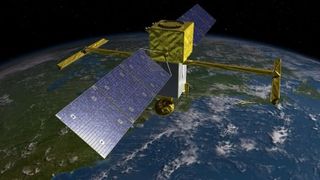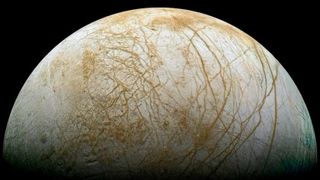Cloud control to Major Tom: NASA's space missions are going 'cloud native'
Pioneering the cloud for storing, analysing and processing big data from deep space
Expanding cloud infrastructure
If NASA pioneered its use of the cloud for image processing and sharing, it's since extended it to all kinds of other data. First it made thermal telemetry coming off the Mars rovers, which was until recently being shared as emails and PowerPoints within JPL, more shareable and dynamic.
"We took it out of static emails and put it on the web with an elastic compute capacity behind it to provide not just a snapshot, but a restful website where you could search through several hundred Sols [a Martian day] worth of data," says Rob Witoff, an ex-JPL data scientist, and now Director of Coinable.
The next trick was to cross-reference it with images of exactly where a rover was at the time of each thermal readout. "In just under 30 minutes we were able to merge these tools together so that when you click on any data point it will use the other API and pull that image in, to help engineers to interact with multiple data sets," adds Witoff.
Now every dataset JPL has can be almost instantly linked. "It's a modern cloud infrastructure that can elastically scale and be reused from mission to mission," says Witoff. "We no longer have to start from scratch for each mission."

The elastic cloud
Two of NASA's Earth-orbiting satellites – SWOT (Surface Water Ocean Topography) and NISAR (NASA-ISRO Synthetic Aperture Radar) – are about to test NASA's cloud storage capabilities to the maximum. As they search for and map water and natural hazards respectively, both generate 100Gbps per second of traffic, so over 100TB per day. Over their lifetime, the data they produce amounts to 1,000 petabytes each.
"How do you get it from space into a data centre?" asks Soderstrom, adding that his team are wrestling with that right now. "We think the cloud is the only way, so all of a sudden cloud computing becomes mission-critical, both on the storage and on the network."
Sharing data, algorithms and software
JPL's use of the cloud is also allowing scientists across the globe to collaborate more easily without having to physically download and store terabytes of data. "One of the most profound implications of cloud commuting is that it's enabled us to co-locate large amounts of scientific data, with virtually limitless amounts of compute capacity that can be provisioned on-demand," says Shams. JPL is also now using the cloud to share among scientists preconfigured software complete with sample data-sets.
Are you a pro? Subscribe to our newsletter
Sign up to the TechRadar Pro newsletter to get all the top news, opinion, features and guidance your business needs to succeed!

The future for NASA's cloud
JPL's goal is a 'cloud native' mission, one that starts and finishes completely in the cloud. Its first such missions – both planned for the 2020s – are to Europa (a flagship mission of NASA that will search for signs of life) and the ARM mission (an ambitious proof-of-concept project to redirect an asteroid).
"Eight years ago we knew that if we could start a mission in the cloud, we'd be there," says Soderstrom. "We can now re-provision in a weekend what used to take months," he says about increasing storage capacity for these cloud-only missions. "The future of enterprise is going to use the cloud," says Soderstrom. "We're not going to talk about data centres anymore."
Jamie is a freelance tech, travel and space journalist based in the UK. He’s been writing regularly for Techradar since it was launched in 2008 and also writes regularly for Forbes, The Telegraph, the South China Morning Post, Sky & Telescope and the Sky At Night magazine as well as other Future titles T3, Digital Camera World, All About Space and Space.com. He also edits two of his own websites, TravGear.com and WhenIsTheNextEclipse.com that reflect his obsession with travel gear and solar eclipse travel. He is the author of A Stargazing Program For Beginners (Springer, 2015),
Most Popular


